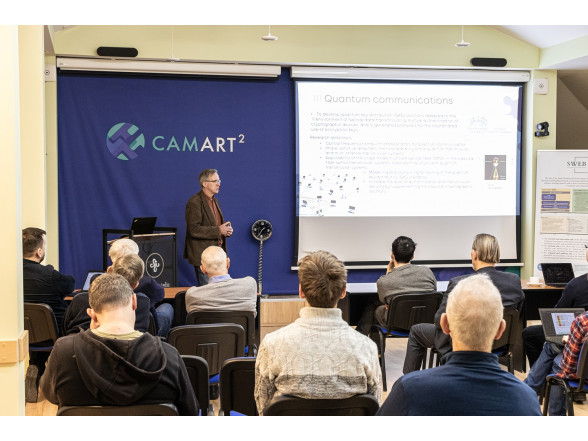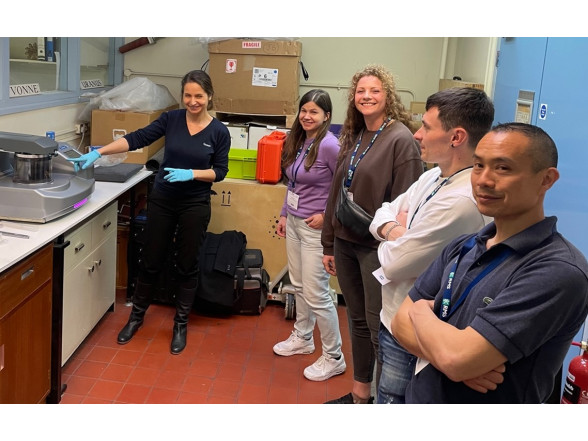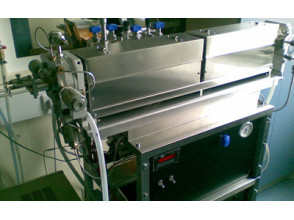The ISSP UL hosted the last event of its winter scientific seminar series on January 17, both at the ISSP UL premises and online. The event brought together ISSP UL’s leading minds in quantum research to share their latest theories and experimental studies.
The seminar commenced with a warm welcome from Prof. Dr. phys. Anatolijs Šarakovskis, the esteemed head of ISSP UL’s Laboratory of Spectroscopy, and Dr. habil. phys. Andris Šternbergs, the deputy director for science at ISSP UL.
Dr. phys. Anatoli Popov from the Laboratory of Kinetics in Self-Organizing Systems at ISSP UL kicked off the presentations with an insightful exposition on the “Application of swift heavy ions to assess the radiation properties of materials and for nanostructure formation using ion track technology.” His elucidation provided a comprehensive understanding of the innovative techniques shaping material science.
Following Popov’s discourse, Aleksandrs Platoņenko, another researcher from the same laboratory, delved into “Direct variational calculations of the excited states: from ground state DFT to excitations in solids.” His analytical approach illuminated the pathways of variational calculations, bridging ground-state DFT to excitations in solid structures, offering a unique perspective on the quantum landscape.
Dr. phys. Andris Anspoks, the director of ISSP UL and a leading researcher in EXAFS spectroscopy, shifted the focus towards a broader horizon by shedding light on the “Latvian Quantum Initiative”. His presentation underscored the institute’s commitment to fostering quantum advancements on a national scale.
The series of presentations concluded with Dr. habil. phys. Eugene Kotomin, a leading researcher from the Laboratory of Kinetics in Self-Organizing Systems. Dr. Kotomin’s presentation, titled "Perovskite Nanoparticle Computer Modeling for Efficient Hydrogen Production," showcased cutting-edge advancements and offered a glimpse into the future of sustainable energy solutions, underlining the transformative potential of perovskite nanoparticles.
Concluding the series of erudite presentations, Dr. habil. phys. Eugene Kotomin from the Laboratory of Kinetics in Self-Organizing Systems captivated the audience with his talk on “Perovskite nanoparticle computer modeling for efficient hydrogen production.”
Each presentation was followed by a lively Q&A session, fostering an environment of knowledge exchange and collaboration. As the final seminar of the winter series, participants engaged in a thought-provoking wrap-up and discussion, reflecting on the collective achievements and future possibilities within the main research directions of the ISSP UL.



